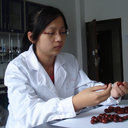Gancao-Gansui combination impacts gut microbiota diversity and related metabolic functions.
Mo kle
Abstrè
BACKGROUND
The theory of "eighteen incompatible medicaments" (EIM) in traditional Chinese medicine (TCM) is the most representative case of herbal-herbal interactions. Gancao and Gansui are one of the incompatible herbal pairs in EIM. Gancao, also known as "licorice", is the most frequently used Chinese herb or food additive. Gansui, the root of Euphorbia kansui T.P. Wang, is another famous Chinese herb usually used to treat edema, ascites and asthma but could induce gastrointestinal (GI) tract irritation. Although Gancao and Gansui are incompatible herbal pairs, they are still used in combination in the famous "Gansui-Banxia" decoction.
OBJECTIVE
This study was conducted to investigate if Gancao-Gansui combination could exacerbate Gansui induced GI tract injury. Moreover, the impact of Gancao-Gansui combination to gut microbiota and related metabolism pathways were evaluated.
METHODS
Normal mice were divided into different groups and treated with Gancao extracts, Gansui extracts, and Gancao-Gansui combination extracts for 7 days. Serum biomarkers (diamine oxidase activity, lipopolysaccharide, motilin, IL-1β, IL-6, TNF-α) were determined to reflect GI tract damage. Gut microbiota diversity was studied by 16S rDNA sequencing and metagenomes analysis were also conducted to reflect functional genes expression alteration. Fecal hydrogen sulfide concentrations were measured by spectrophotometry to confirm the alteration of Desulfovibrio genus. Fecal lipid metabolomics study was conducted by GC-MS analysis to confirm the change of metagenomes and Mycoplasma abundance.
RESULTS
Gancao-Gansui combination did not exacerbate GI tract tissue or functional damage but caused gut microbiota dysbiosis and increased some rare genus's abundance including Desulfovibrio and Mycoplasma. Desulfovibrio genus proliferation was confirmed by the disturbance of fecal hydrogen sulfide homeostasis. Gancao-Gansui combination also dys-regulated the metabolic genes in metagenomes. Mycoplasma genus proliferation and the metagenomes changes were both confirmed by metabolic profile analysis of fecal lipids, especially cholesterol.
CONCLUSIONS
Gancao-Gansui combination can impact the gut microbiota diversity and related metabolic functions. Further studies should be carried out when the combination of Gancao-Gansui is used in herbal formulations as this may alter the diversity of the microbiota.



